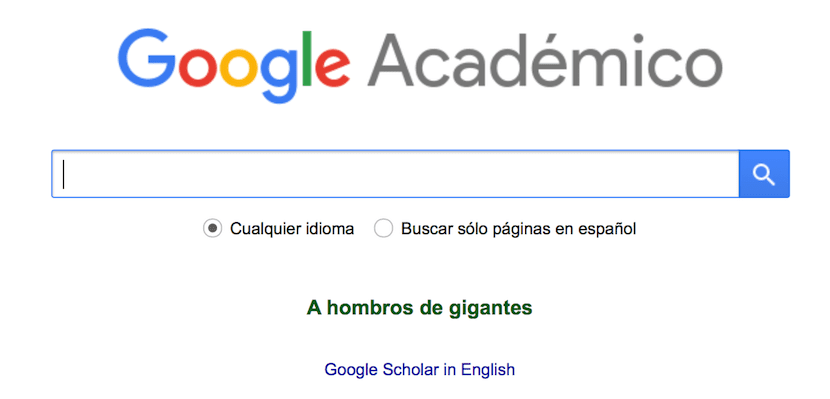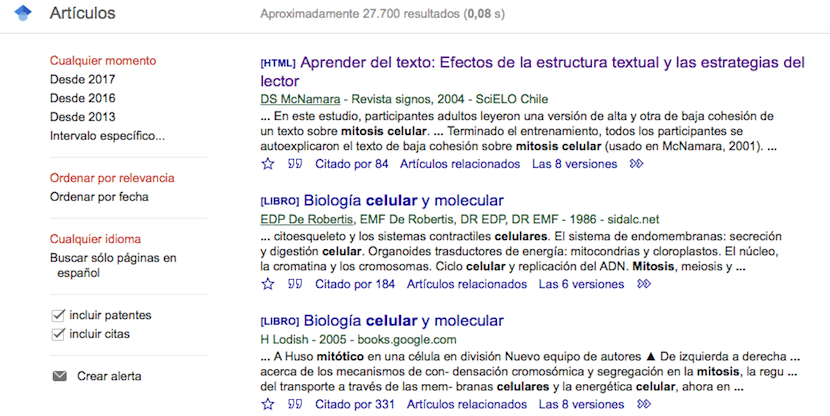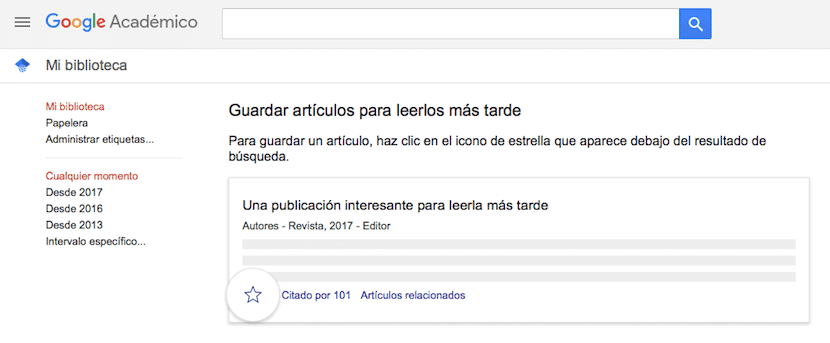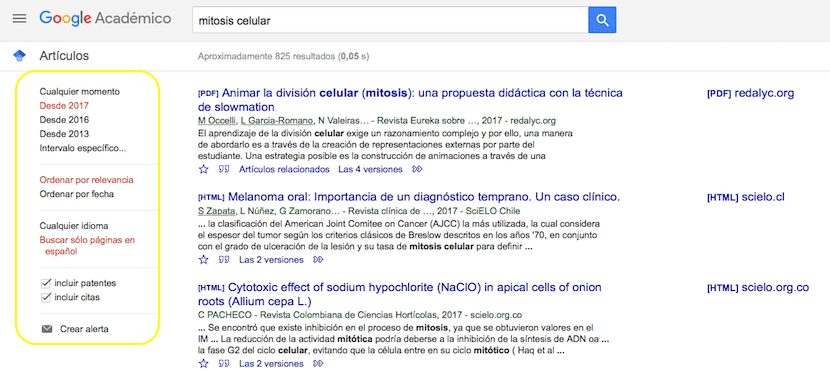
Google's mission since it hit the market is none other than trying to organize all available information on the internet so that the most relevant can be found easily. Currently Google allows us to search by images, news, videos, maps, documents but also allows us to perform academic searches, that is, of works or studies published by both universities and specialized magazines.
The mission Academic google It is practically the same as the rest of the functions that it offers, but it facilitates access to the texts available in libraries and university libraries around the world. But What is Google Scholar? How does it work?
Thanks to this service, many students turn to it instead of going to the library and waste time looking for information for their studies, jobs ... without counting on the comfort it offers us by having in our hands jobs from anywhere in the world related to the subject we need at that time.
What does Google Academic offer us?
From Google Academic we can access books, theses, scientific articles from the same place ... any type of document that is related to academic literature and not so academic since it also shows us the majority of articles that are published in the main scientific journals.
Through Google Scholar we can search by subject, authors, publications in practically more than 100 languages. In addition, most articles that talk about other studies are linked so that we do not have to perform an additional search to expand the information of a specific document.
How the documents are classified

The rating and the order in which the results are displayed is just as important as the results they show us. Like the algorithm that Google uses in its search engine, Google Scholar is based on the author of it, the number of times it has been cited, both the author and the document, where it has been published as well as the frequency of consultation it has. This service also takes into account the information it shows, that is, if it is complete or if it is full of references to other studies.
Can I access all the documents shown?
This service not only offers us access to a large number of articles, theses, studies and other research, but in most cases, also allow us to access the entire document. But not always, since on some occasions, the link that is displayed only shows us a brief summary of it, indicating how we can access the full text. All articles that are complete can be downloaded in most cases through a link to the document format located to the right of the result.
Can I save the articles?

When we find the document or article we need, Google Scholar offers us the option of being able to save it in our library to be able to consult it later when we need it, without having to resort to the search again. This option is ideal when we find articles that are not available for download, either because they are not complete (access limitations) or simply because the article format is HTML and not PDf or .doc.
How to Google Scholar
When searching, depending on the subject, Google can omit the articles and prepositions used, to obtain more concrete results. In the case of Google Scholar, searches are performed by omitting them in order to avoid showing results that may seem to correspond to searches but that ultimately are not.
It will also not take into account if we write in upper or lower case or if we accentuate the search terms correctly. If we carry out, for example, a search with the terms "How is cell division carried out" we are going to obtain less concrete results that if we only use the terms "cell division".
As usual, despite the fact that English is the most widely spoken language in the world, it has become the universal language with which we can communicate with practically anyone, so that If you are looking for results in English you will find much more information What if you only focus on looking for results in Spanish or any other language.
How to filter Google Scholar information

If we search for a very generic topic without specifying more details, Google Scholar offers us a large number of results in which we will spending a lot of time trying to find the one that contains the necessary information for our end. Fortunately, this service offers us the advanced search option on which we can click to set the date range of the result, the author, who performs the search only on the article and not only on the headline.
We can also search for documents in other languages if we verify that the information shown in our language is not sufficient. In addition, we can make use of an alert system to notify us by email when new articles are added on a certain topic.
Can I upload my articles to Google Scholar?
In order for our papers or documents to be available to everyone through Google Scholar, they must be been published by any of the libraries or universities who actively collaborate with the documentation available in this service. In this way, Google prevents anyone from posting documents that have not previously been verified by an agency.
In its beginnings, in 2004, anyone could upload to this service any type of document that they had created without passing the filter of an organization, but the service began to lose part of credibility Due to the fact that it was becoming easier to find articles of very low quality and with hardly any references with which to contrast this information.
If we are lucky enough that some of our work is available on Google Scholar we can open an account to know at all times the total number of them available, in which articles refer to our work, the times it has been shared or downloaded ... To quickly know in which articles, we have been cited, we have to make use of the citations function, a function that will help us quickly to show ourselves all the documents in which our name appears or some fragment of our work
Practical tool available to everyone to support any current case study with a global trend.